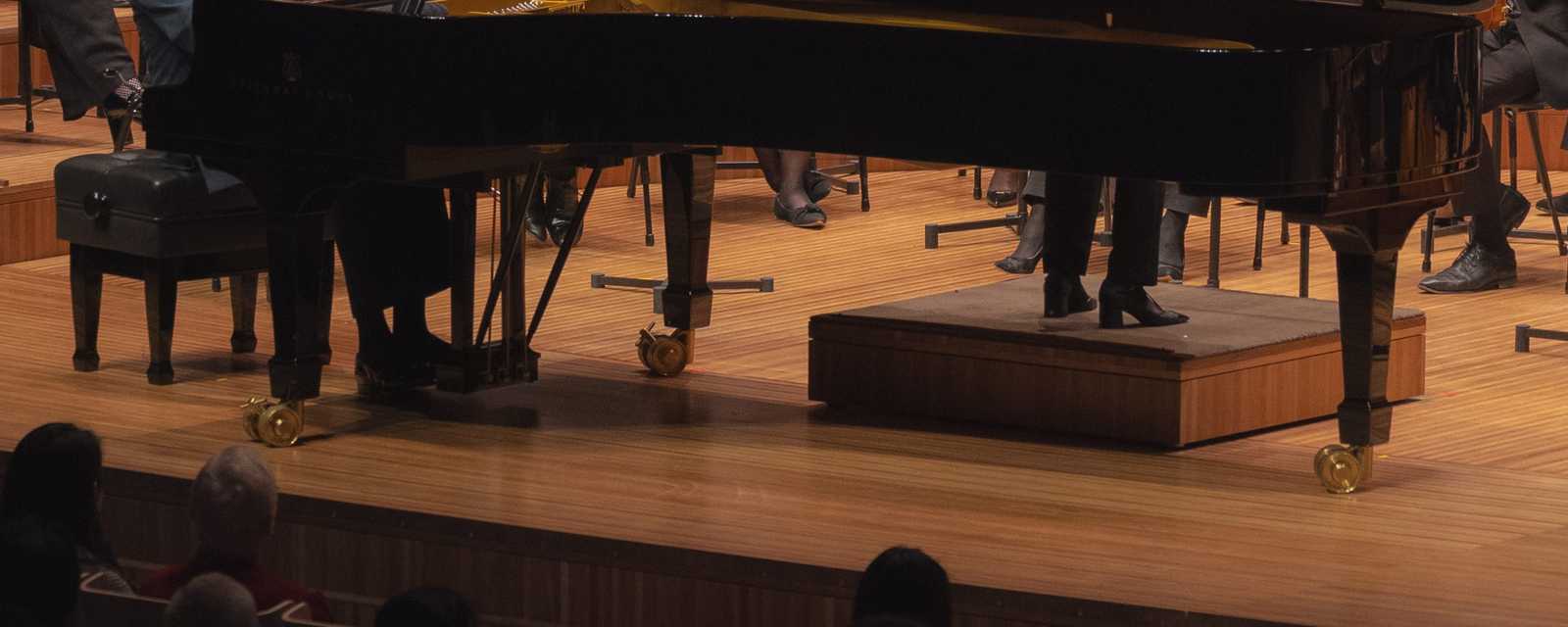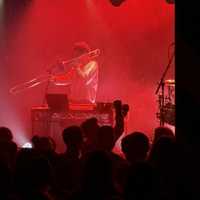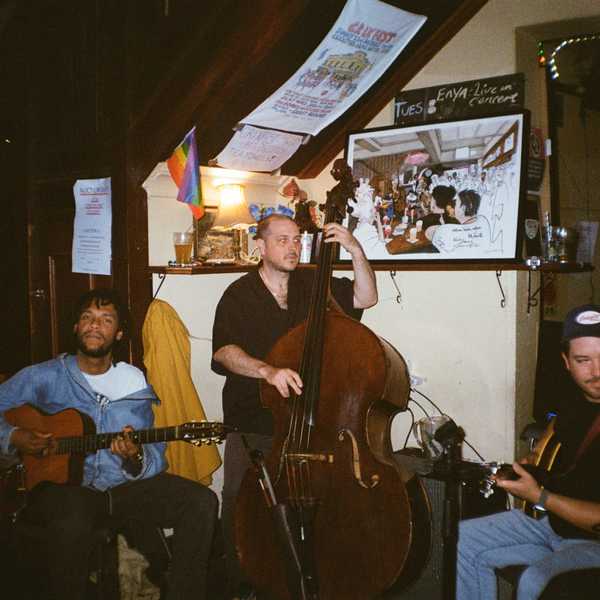Saturday 17 May 2025
Review by Paul Neeson (Arts Wednesday)
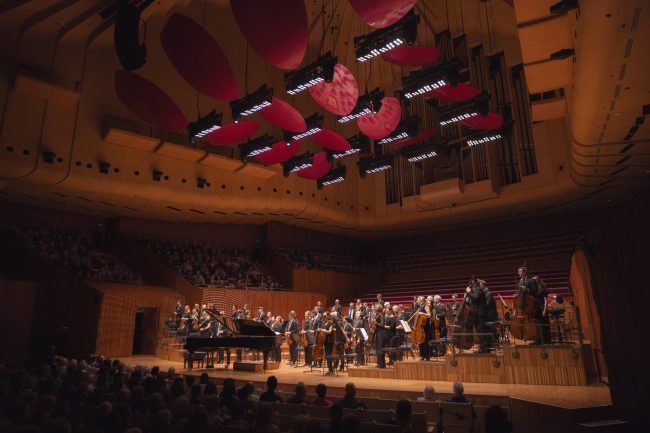
Conductor, Elim Chan, is one of the most exciting guest conductors the Sydney Symphony has worked under in some time. While slight in stature, her enthusiasm is contagious and large, her focus acute; her physicality elicited a great depth of emotion, producing startling dynamics from the orchestra. Chan was born in Hong Kong and her prestigious CV includes being mentored by world class conductors and working with leading orchestras from around the world.
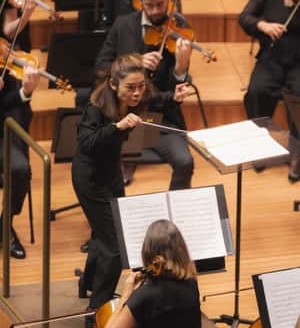
Her first task was interpreting a new work from Australian composer, Iain Grandage; LiFT was commissioned as part of the Sydney Symphony’s 50 Fanfares Project which we have been enjoying at the opening of concerts now for some years. Unlike a lot of the other fanfares we have heard in the series, this one is scored for brass only, and boy did the brass section enjoy playing it. The textures were many and varied, sometimes overlapping, sometimes working together. The imagery evoked ranged from a hive of angry hornets, to a joyous major triad that closed the work to great applause. Grandage accepted the audience’s invitation to the stage wth an exuberant yet self-effacing smile.
Next came highlights from Prokofiev’s Romeo and Juliet Suites. The commission to write a ballet based on the Shakespeare play was enough to entice Prokofiev to return to Stalin’s Russia. The dramatic contrasts of the various movements were accentuated with Chan’s expertise and skill. She often seemed to leap into the air to elicit the emotion she was seeking from the orchestra. The well-known Montagues and Capulets with its assertive fire-brand March of the Knights opened the work and rarely fails to inspire a certain kind of grandeur. The power of the brass and percussion contrasted the vulnerability of the winds in the quiet middle section. The dramatic close to the movement wth its screaming harmonic tension failed to move the well-disciplined crowd to applaud. The orchestra seemed a touch disappointed that they couldn’t budge the audience from their work-like self-control, despite their boldest musical efforts to do so.
Prokofiev’s ability to paint pictures is expressed no better than the child-like skittishness of Juliet the Young Girl. In the Death of Tybald movement, the violence in the music was palpable, with Chan stabbing the air with her baton like a sword. The musicians responded accordingly with violent thrusts of chords pitched against swirling strings. Again the crowd held their applause, albeit reluctantly. It was only after the poignant suffering of the final movement, Romeo at Juliet’s Grave, did they unleash a frenzy of appreciation. Of late, symphony audiences have been clapping between movements, (and dare I mention sometimes within movements) which I think is a good thing. But this crowd was a seasoned and well-behaved one, more subscriber than tourist. But it feels a shame that we haven’t yet lost the stuffiness of old that forbids us from spontaneous applause when earned by a great performance.
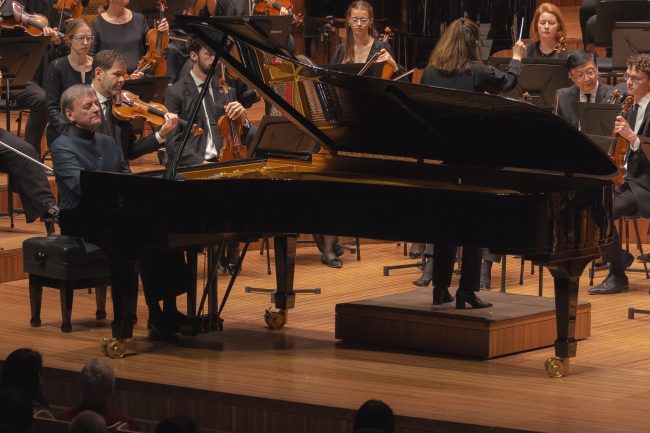
And so to the final work, Brahms’ 1st Piano Concerto with English soloist, Stephen Hough. Seated as we were unusually in the 8th row from the stage, we had an extraordinarily good view of his hands at work, and what an accomplished craftsman he is. But it was the teamwork with Elim Chan that made the performance so exquisite. Apart from Hough’s brilliant and flawless technique, the overall effect was not so much a concerto for piano and orchestra, but a duet between two equal partners. The piano often being the punctation to orchestral phrases, and the reverse being the case at other times.
Brahms is not a melodist like Rachmaninov or Tchaikovsky (with the exception here of the 3rd movement). Nor does he employ infectious rhythms like Beethoven. But what he does best is sentiment (that Hough and Chan were able to exploit to the maximum), and totally satisfying orchestration. The seamlessness of transitions from soloist to tutti were navigated expertly and jointly by soloist and conductor.
And we in the hall loved it! So much that we were literally begging for an encore, and after five curtain calls we received Robert Schumann’s Warum? (Why?) from his Op.12 Fantasiestücke. This is a quiet poignant movement that asks many questions only to leave them hanging in the air – a thing of true and poignant beauty.
What a totally satisfying concert from the orchestra, soloist and conductor, totally in sync and unified as one powerful musical entity. Bravo indeed!
Share "Review: Stephen Hough performs Brahms"
Copy

